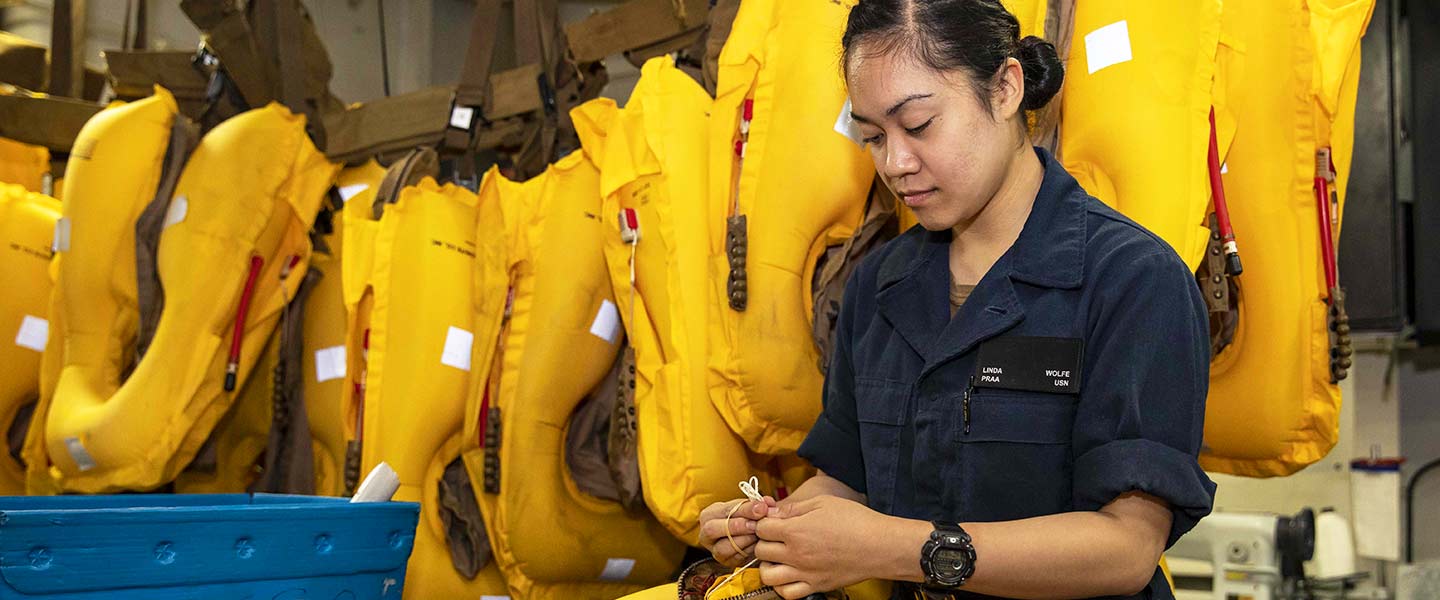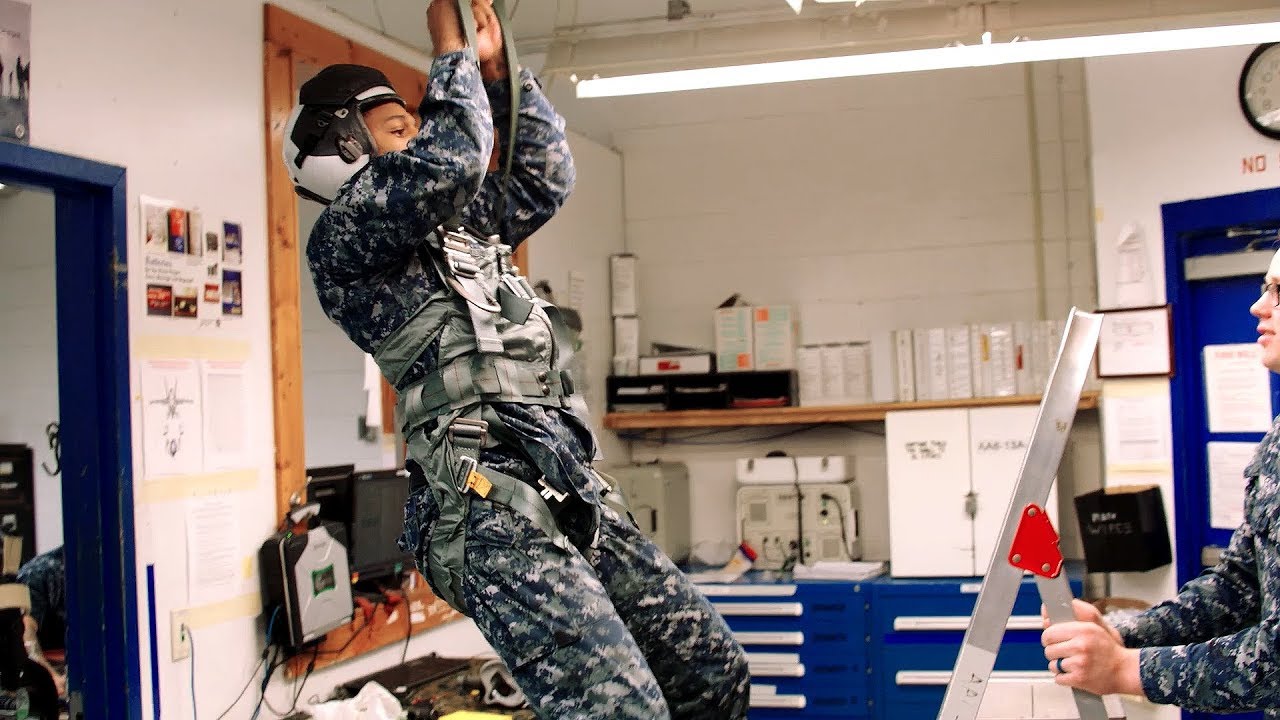Talk to a Navy recruiter. From STEM careers to Navy life, get the answers to your burning questions.
1-800-USA-NAVY
Chat with a Navy expert about top STEM careers, unique scholarship opportunities, our culture of excellence, or any other burning questions you might have.
Hours
Closed on federal holidays.
Rules
Before you start a chat, please read our chatroom rules:
- You must be at least 17 years of age to enter the chat.
- To use Navy live chat, you must enter a username.
- Chats will only be conducted during specified hours of operation.
- Profanity, abusive language and any material deemed unacceptable will not be permitted.
- If you attempt to use profanity or abusive language, or provide material deemed unacceptable, the chat will be terminated, and you may be barred from future sessions.
Troubleshooting
Don't see a chat button on this page? Try using a different internet browser. There is a known issue affecting some users from accessing the chat button. We are actively working to fix this issue.
Make sure you’re getting the latest updates and information about top STEM career opportunities, benefits, day-to-day life in the Navy and more. We will only use your information for our communications. You can also talk to a Navy recruiter.
* Required Field
You must be 13 years old or older to subscribe to Navy emails.
Aviation Survival Equipmentman

With the creed of “the last ones to let you down,” as an Aircrew Survival Equipmentman (also referred to as Parachute Rigger or PR), you’re responsible for the life-saving equipment that keeps pilots and aircrewmen safe in the event of an emergency. Though rare, if the flight team needs to eject mid-flight, your work ensures that everything goes according to plan. On day one, you’ll prepare aircraft for every possible emergency well before the plane ever launches. From rigging parachutes to repairing the stitching on shoulder harnesses, this job does everything it takes to protect the lives of Navy pilots and aircrew.
More Information
Responsibilities
As an Aircrew Survival Equipmentman (PR), you’re responsible for maintaining the safety equipment that could save a Naval Aviator’s life in the event of an emergency. Your job responsibilities as a PR may include:
- Inspecting, maintaining and repairing survival equipment, flight gear and protective clothing
- Inspecting and testing oxygen regulators, converters and related equipment
- Rigging, packing and repairing parachutes
- Equipping and packing life rafts
- Operating and maintaining sewing machines and performing fabric work necessary for survival equipment
- Volunteering for aircrew duty
Work Environment
Duties in the PR rating are usually performed indoors in aircraft hangars and aboard aircraft carriers. You may also work outdoors on flight decks or on flight lines at air stations. Additionally, PRs who volunteer for aircrew duty have the opportunity to serve aboard aircraft.
Training & Advancement
Upon completion of initial training at Recruit Training Command Great Lakes (known as Boot Camp), you’ll report for specialized training, including:
PR Core and Strand “A” School (12 weeks) in Pensacola, FL, for training in basic aviation theory and related skills
After you complete your training, you may be assigned to a squadron, aircraft carrier, Navy ship, or air station. PRs assigned to intermediate level maintenance may receive additional “A” School training before reporting to their first assignment.
Promotion opportunities are regularly available but competitive and based on performance.
Advanced Training
Advanced training as an Aircrew Survival Equipmentman may also be available during later stages of your career. For those with further leadership aspirations and a college degree, Officer roles may be available, providing opportunities to lead and train others.
Post-Service Opportunities
Specialized training received and work experience gained in the course of service can lead to valuable credentialing and occupational opportunities in related fields in the civilian world, such as employment with airlines, airports, aircraft manufacturers and more.
Education Opportunities
Beyond offering access to professional credentials and certifications, Navy technical and operational training as an Aircrew Survival Equipmentman can translate to credit hours toward a bachelor’s or associate degree through the American Council on Education.
You may also continue your education through undergraduate degree opportunities like the Navy College Program and Tuition Assistance and the Post-9/11 GI Bill.
Qualifications & Requirements
A high-school diploma or equivalent is required to become an Enlisted Sailor and an Aircrew Survival Equipmentman. You must also be a U.S. citizen eligible for security clearance.
PR applicants should possess good writing and speaking skills, as well as an aptitude for working with tools, equipment and machines. You should be able to perform meticulous detail work, maintain accurate records and work well as part of a team.
Important personal attributes as a PR include resourcefulness, curiosity, and the ability to follow through on tasks. Attention to detail and good memory are vital, as your work will directly impact the lives of other people. You should also be physically fit and have normal use of your hands.
General qualifications may vary depending upon whether you’re currently serving, whether you’ve served before or whether you’ve never served before.
Part-Time Opportunities
Serving part-time as a Navy Reserve Sailor, your duties will be carried out during your scheduled drilling and training periods. During monthly drilling, Aircrew Survival Equipmentmen in the Navy Reserve typically work at a location close to their homes.
For annual training, you may serve anywhere in the world, including locations in the U.S., at bases overseas, or in areas where humanitarian needs are great.
Take a moment to learn more about the general roles and responsibilities of Navy Reserve Sailors.
Most of what you do in the Navy Reserve is considered training. The basic Navy Reserve commitment involves training a minimum of one weekend a month (referred to as drilling) and two weeks a year (referred to as Annual Training) – or the equivalent of that.
Aircrew Survival Equipmentmen in the Navy Reserve serve in an Enlisted role. Before receiving the ongoing professional training that comes with the job, initial training requirements must be met.
For current or former military Enlisted servicemembers, prior experience satisfies the initial Recruit Training requirement, so you will not need to go through Boot Camp again.
For those without prior military experience, you will need to meet the initial Recruit Training requirement by attending Boot Camp in Great Lakes, IL. This training course will prepare you for service in the Navy Reserve and count as your first Annual Training.
Compare Navy Careers
See how a career as a Navy SEAL compares to other Navy jobs.
Compare roles, pay and requirements for each job now.
Have a question or just want to learn more? We're here to help.
































































































































